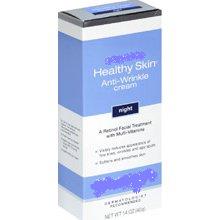2. Restore Your Locks' Luster
Give yourself a weekly hot-oil treatment
Save a bundle by substituting jojoba oil (find it in
natural food stores for about $10) for pricier
hair-repair products. "Jojoba has a fine molecular structure that allows
it to enter and fill the hair shaft, making it a perfect
choice for conditioning," says Paul Labrecque, owner of the New York
City–based Paul Labrecque Salon. Spread the oil liberally through dry hair, put
on a plastic shower cap, then cover with a hot towel for 30 minutes. Wash it
out thoroughly, then rinse with cold water to seal the cuticle and trap added
moisture. "When the hair shaft is infused with oil, the cuticle lies
flatter, so your hair looks smoother and shinier," he explains.
Keep a cool head
Heat opens hair's protective outer layer, damaging strands and creating frizz.
"Frequently cooling the hair while styling helps keep your cuticle
flat," says Labrecque. If your dryer has a cool-shot button, use it to
deliver a blast of cold air after drying each individual section. (This also
helps lock in your new style.) If it doesn't, he suggests holding your style in
place with your brush for about 30 seconds to let hair cool off.
3. Reduce Redness
Get milk
Soak a clean washcloth in cold milk and place it over your face for 10 minutes.
"Milk contains proteins, fat, amino acids, and vitamin A—all of which
reduce redness and calm irritated skin," says David Bank, MD, a
dermatologist in Mount Kisco, NY. Bonus: The lactic acid in milk exfoliates, so
skin looks soft and glowing.
4. Banish Brown Spots
Camouflage with care
First, dab concealer that's one or two shades lighter
than your foundation onto the spot. Use a concealer brush—it'll give more
precise coverage than your finger. Follow with a dot of foundation that exactly
matches your skin tone. "The concealer lightens the spot, and the
foundation helps blend it seamlessly," says New York City–based makeup artist Jessica Liebeskind.
5. Get a Healthy Glow
Replace your makeup wisely
"Switching from powder formulas to creamier ones gives your skin a soft
reflective sheen," says Kimara Ahnert, a makeup artist in New York City.
Cheeks tend to be drier than your T-zone, so as soon as you use up your powder
blush, buy a light liquid or cream formula that imparts a youthful glow instead
of leaving skin dull and matte.
6. Plump Thin Lips
Think pink
"Dark or bright colors call attention to the size of your lips,
emphasizing thinness and fine lines around your mouth," says Liebeskind.
Instead, choose a lipstick that mimics the color of your lips when you were
younger.
Define your lips
After applying lipstick, line just at the outer edge of the natural border of
your mouth with a pencil in a shade that exactly matches your lipstick. Don't
try to draw on a bigger pout—it'll only look fake.
7. Brighten Your Smile
Mix your own whitener
Brushing with a paste made of baking soda and water a few times a month removes
superficial staining and whitens teeth by a shade or two. "The graininess
neutralizes stains and polishes teeth but isn't abrasive enough to wear down
your enamel," says Jennifer Jablow, DDS, a cosmetic dentist in New York
City.
Keep teeth whiter, longer
To sidestep stains when drinking red wine, chase your vino with a handful of
crunchy raw vegetables. "They have a brushing action that can rub away
newly setting stains," says Jablow.
Choose the right lipstick shade
"Colors with blue undertones make teeth appear brighter," explains
Liebeskind. To figure out which of your lipsticks fit the bill,
she recommends lining up three or four shades—in comparison to each other, it
will be more obvious which are blue-based and which have yellow or gold
undertones that bring out the yellow in teeth.
8. Minimize Under eye Circles
Be generous with your concealer
"The biggest mistake women make is using too little concealer," says
Liebeskind. Start by putting on eye cream—concealer can settle into fine lines
of all skin types, especially drier complexions. Then apply a generous layer of
concealer from the inner corner of the eye around to the outer corner with a
concealer brush. Pat and press the product into the skin to blend. If there's
still any darkness visible, apply a second layer. Set the concealer with a
dusting of face powder that matches your foundation.
Caffeinate your eyes
Tea bags can perk up tired-looking eyes. "The caffeine helps shrink the
underlying dark blood vessels and forces out some of the liquid that creates
puffiness," explains Ava Shamban, MD, an assistant clinical professor of
dermatology at UCLA. Soak tea bags in hot water for a minute before plunging
them into ice water for a few seconds. Lie down and apply
them directly to your eyes for 15 minutes.
9. Smooth Imperfections
Keep makeup outside the lines
To be sure there's no excess makeup to settle into—and emphasize—the fine lines
around your eyes and mouth, Ahnert suggests using a dry makeup sponge to gently
smooth and blend makeup after applying it. Don't wipe, though, or you'll rub it
off.
10. Give Eyes a Lift
Curl lashes correctly
When lashes are clean and dry (wet ones won't hold a
curl), position the curler at the root of lashes and give three firm, gentle
pumps. Release and repeat. "Holding it steady doesn't create a
natural-looking, fluid curl," says Liebeskind.
Create a long-lasting curl
Heat your curler with your blow-dryer for 15 seconds first. "The warmth
holds the bend better," says NYC-based makeup artist Mally Roncal.

















